#which leica m
Text
Q&A: Which Leica M Should I Buy?
by Johnny Martyr
Here’s a DM from a reader in France:
“Hi Johnny, how are you? My name is Victor and I live in Paris. I was intrigued by your article about camera shops in Paris. I am trying to start in the photography world, more as a hobby than anything else, and I wanted to get a first camera from one of these shops. My idea was to get an analog and a digital camera. Do you have any tips to…

View On WordPress
0 notes
Text
so for some reason, out of all the leica flagship store accounts in China, the one in Chongqing decided to share yibo’s photos and promote the camera he is using. thus confirming the guess that it is M11M. yes, it’s free promo. a number of people got curious about this camera so it’s only fair that they take the opportunity. but chongqing? the hometown of the person who gifted the camera to him (allegedly)? the same one who’s latest drama was filmed in Chongqing and might have had the chance to look around? 👀
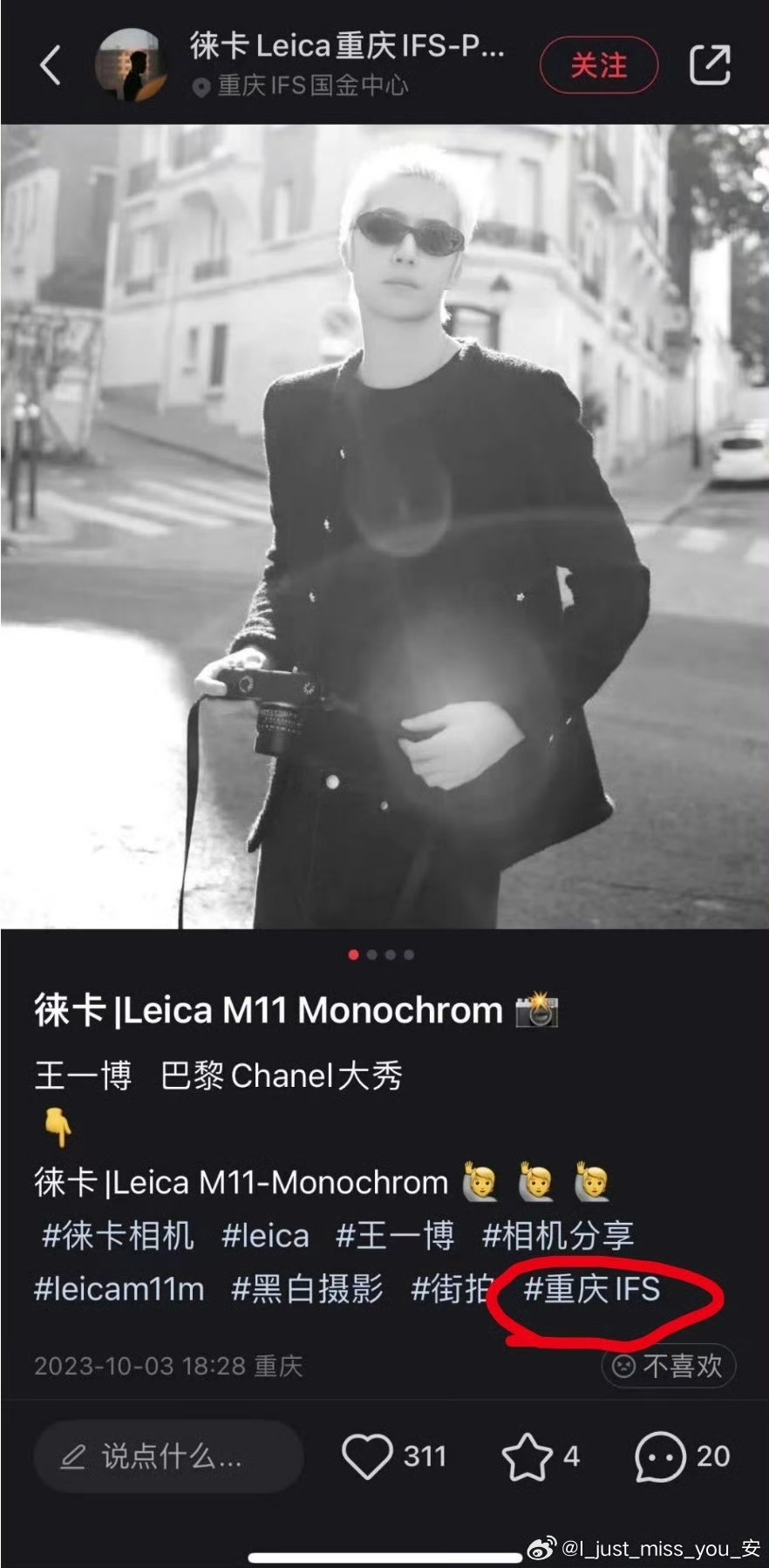

they also talked about how good this camera is and how it is “the ultimate expression of black and white photography”. one clue we found here to support the cpn of them wanting to have a couple b&w camera is how they said that the Q2 ( which we think gg also owns the M version of ) is already discontinued. if you really want it, they have one special edition in their taiwan store. so if these two really wanted to match, they couldn’t. Q2M is no longer available, so the next best thing is M11M.

107 notes
·
View notes
Text
so there's this fic rec podcast @ficclique and in their latest episode they discuss my Ted Lasso heist AU they will see us waving from such great heists at length! what's especially amazing about this is that two out of three of the hosts have never seen Ted Lasso but nevertheless they liked the fic enough to talk about it for nearly half an hour (also one of them thought for a while that Trent Crimm was played by Brett Goldstein. This is deeply hilarious to me.)
Anyway it's high time I made an FAQ about this but this is how you pronounce laiqualaurëlótë (which is Quenya Elvish for "green gold flower"):
laiqua - lai-kuh, like the camera Leica
laurë - lao-reh with the 'r' rolled, as in Italian 'laurea'
lótë - lo-teh, as in Spanish 'elote'
Should I have chosen a handle that was easier to spell/pronounce/remember? probably. I came up with it when I was a bored 14-year-old in computer class and now it's stuck.
As to the question of "what AU would you be in if you were in an AU fic", I would be in a historical detective mystery AU. I should like to be the glamorous gunslinging detective but realistically I would be the chaotic ingenue, à la Maud Blyth in @fahye's The Last Binding trilogy or Abby Matsuda in Deadloch.
Thank you to Reid, Brenna and Nicole for choosing Such Great Heists for your podcast, and to the mysterious M for reccing it to them! The other two fics recced sound fantastic (Sherlock/OMC and Dracula/Barbie, both are Choices) and I look forward to checking them out.
21 notes
·
View notes
Text
Let’s check out the Leica camera she is merching….oh yes, that is what she is doing….
Why Leica Cameras Are So Expensive
Leicas are known for their high cost, but this is not solely due to their luxury brand image. The Leica M line of cameras and lenses, in particular, are known for their high cost.
The main reason for the high cost of Leica cameras and lenses is the quality and craftsmanship that goes into their production.
Components
One of the main reasons for this is that Leicas are handcrafted. Every single component of the camera, from the screws to the motherboard, is assembled by hand by skilled workers. This process is time-consuming and requires considerable skill, which is what makes Leica cameras worth the high cost. It’s the difference between buying a mass-produced piece of furniture book and getting a hand-carved one.
Made In Germany
Another reason for the high cost of Leicas is that they are only made in one place: Germany. Unlike other camera companies that have factories in multiple countries, Leica centralizes its production in Germany, which adds to the cost. Additionally, Leicas are not mass-produced and are made in small batches, which affects supply and demand, driving up the cost.
Long-Lasting
Leicas are also known for their longevity, both in terms of the shelf life of the camera and the lifetime of their lenses. Leica cameras are built to last, and many photographers have held onto their Leica lenses for decades. This durability and longevity make the initial high cost more attractive in the long run.
Lastly, Leicas are built to be durable, both in the lenses and the camera body. They are made with durable metal, which makes them resistant to wear and tear. This, combined with handcrafted workmanship, centralized production, longevity, and supply and demand, all contribute to the high cost of Leicas.
And…she can keep her story going about having children….her world is cracking around her…..
17 notes
·
View notes
Text
Peiyuan Sun's Internship Highlights
Hi, I am Peiyuan Sun (锫瑗 孙). I am a graduate student at the Conservation Center, Institute of Fine Arts, NYU. I have been working as a Conservation Fellow under the supervision of Preventive Conservator Jessica Pace at the Barbara Goldsmith Preservation & Conservation Department of NYU Libraries since September 2022. Upon completion of my internship in June, I will graduate with an M.A. in Art History and M.S. in Conservation of Historic and Artistic Works. In other words, by the time you see this Tumblr post, I will have finished my four-year-long studies and work! I am really grateful for working in the Department. In this Tumblr post, I will review the highlights of the past 9 months and 22 days.
Setting up a polarizing light microscope
My first mission was to build a LEICA polarizing light microscope from parts and modules. I was a little surprised at first. I had used microscopes but I had never had to build one worth thousands of dollars. And there were two manuals because the microscope would be made with parts from two different models: the stage and illuminator were from DM750 P, and the reflected light unit was DM750 M. It turned out to be straightforward and only took me and Jessica a morning to put everything together (fig. 1).

Figure 1. Me and the microscope.
The next challenge was to write instructions for beginner microscopists because both LEICA manuals assumed that their users are microscopists. To make sure that the instructions are clear to beginners in microscopy, I compiled my notes into 29 pages of step-by-step instructions with many color illustrations. The manual was printed and kept with the microscope in a binder. Not a professional microscopist myself, I found this exercise inspiring, pointing me to the large body of knowledge in microscopy that was still waiting for me to explore.
The microscope can be used in the material identification of fibers, pigments, and other particles. While other recent developments in analytical technologies made polarized light microscopy seem so primitive, a polarizing light microscope is still a beloved, simple, and powerful tool for conservators. Sometimes identification dictates how people should handle an object. For example, blue asbestos fibers are characterized by their needle-like appearance and pale blue birefringence color under transmitted cross-polarized light (fig. 2). While asbestos is an obsolete fill material with health hazard issues, they can surprisingly show up in a collection. If the fibers are loose on an object, the people handling it should take extra precautions to prevent inhaling the fibers (wearing personal protection equipment such as gloves, mask, goggles, and lab coat).

Figure 2. Blue asbestos fibers under transmitted crossed-polarized light.
Kathe Burkhard’s “Gold Fan”
The first object to treat was a painted and gilded paper folding fan made by Kathe Burkhard (1958–), an American painter, writer, and art critic. The fan is covered in gold-colored metal leaves and thick layers of transparent resin which hardened and froze the fan in its open position. Burkhard transformed a cheap paper fan into a gold fan glimmering in thick coatings that look like honey-colored amber. She wrote in white paint “truths” on the one side, and “Lies” on the other side (fig. 3).

Figure 3. The “Gold Fan” before treatment.
The fan had several issues when it came to the care of the Department. The fan’s paper leaves were torn and its gold-colored metal leaves were peeling off the paper (fig. 4). The surface was also covered with dust and grime that darkened colors.
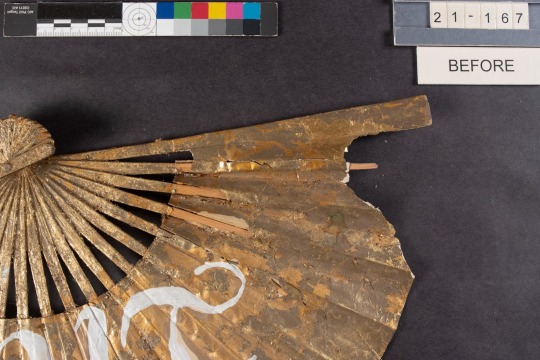
Figure 4. Details of the torn paper fan before treatment.
With the goal to stabilize the fan and improve its appearance, we decided to close the fractures, put down the lifted metal leaves, and reduce the surface dust and grime. I used wheat starch paste to adhere to the torn edges, and I used small strong magnets to press the joints together while the starch paste dried and cured. Adhering a small part each time, I worked along each fracture, and back and forth between the two sides to make sure things align correctly. There was one tear that went along a fold line of the fan. The two sides of the tear had little overlap for adhesion, like the two halves of a malfunctioned lifted bridge. I used a strip of Japanese paper coated with starch paste and a synthetic adhesive called methylcellulose to mend this tear––now I put an extra bridge over the broken one to hold the two sides together.
I introduced gelatin solution as an adhesive to reattach the leaves to the paper. And after the leaves were secured, I used dry pre-washed cosmetic sponges to clean the surface. I cut my sponges into tiny wedges so that I can maneuver a small piece between and over fragile metal leaves. After the treatment, the fan’s paper structure was more stable, and its surface recovered some of its past glitter (fig. 5 & 6).

Figure 5. Details of the torn area after treatment.

Figure 6. The “Gold Fan” after treatment.
Rehousing objects from the David Wojnarowicz Papers MSS.092
Organizing objects crowded in a box can give conservators headaches. When I opened “box 139”, I did not know how many objects were there. It was only after taking a documenting photograph, I realized that 28 objects were crammed into one archival box (fig. 7). They are made of various materials, including metal, plastic, fabric, stone, and glass. These random things were collected by American artist David Wojnarowicz (1954–1992). Some were used as props for his photographs. For example, I noticed that a clock face, “object 092.2.0492”, with Roman numbers might be featured in his 1988 photo Untitled (Time/Money) in the Ant Series (fig. 8).
My mission is to identify the plastic objects and separate them from the rest of the objects. Apart from visual observation, I used Fourier-transform infrared spectroscopy (FTIR) to analyze materials that are suspected to be plastic. This analysis can be used as a non-destructive method. The object’s material of interest could be clamped down against the analysis window on the stage to gain data (fig. 9). Yet not all objects could be fitted onto the stage. Because the machine was intended for industrial use, where samples are usually in powder (such as drugs), the space between the stage and the built-in clamp is limited. The analysis also requires that the surface of the object be pressed against the window on the stage. The pressure can also leave tiny impression marks on some objects due to the clamping. So while the analysis may be non-destructive, it might damage the object.
Though identifying plastics with FTIR was fun, the most interesting part for me was driving a polyester encapsulation system with an ultrasonic generator and motor control. The instrument allowed me to create 35 small Mylar pockets custom-made for the objects. “Object 092.2.0504” consists of small charms (34 metal pendants and 1 feather). Before rehousing, they were stuffed in a small bag made of bubble wrap and brown pressure-sensitive tapes. After rehousing, each charm was snuggly fitted in its pocket (fig. 10). A visitor can easily see both sides of the charms by handling the Mylar sleeves.
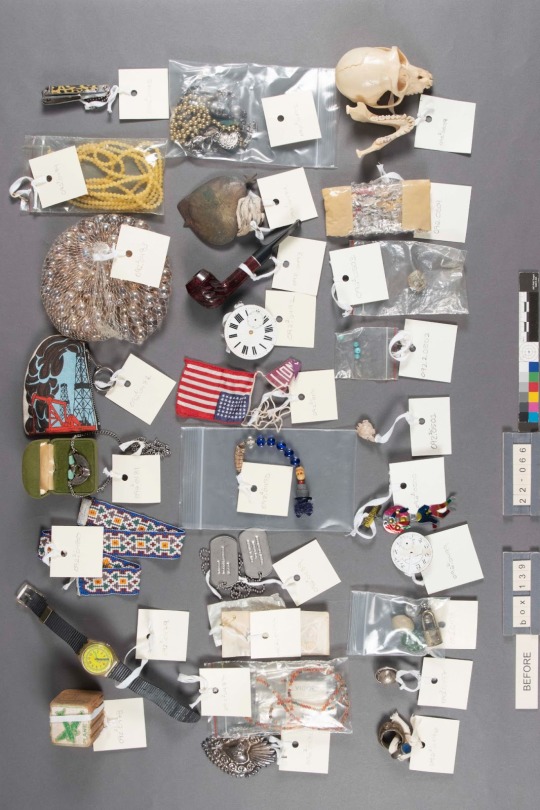
Figure 7. Objects from the David Wojnarowicz Papers.

Figure 8. David Wojnarowicz. 1988. Untitled (Time + Money). Photographs. Gelatin silver print on paper.

Figure 9. FTIR analysis of a scarecrow candy container manufactured by the E. Rosen Company at Rosbro Plastics in the 1950s. The cardboard was added to support bigger objects on the stage.

Figure 10. Charms rehoused in Mylar pockets.
Conservation of Balinese Shadow Puppets in the Mabou Mines Archive MSS 133.
I first knew about the project of the shadow puppets from my supervisor Jessica on September 23rd, 2022. I thought it would be another rehousing project. I did not know that I would study, research, and work on the puppets till the last day of my internship. The project included research, artist interviews, treatment, and rehousing.
The 40 shadow puppets (133.2.0023 through 133.2.0053) were mostly made for MahabharANTa, written by Lee Breuer and performed in 1992 in the United States. The story is a battle between the animals and insects on the White House lawn. The puppets are flat shapes attached to wooden and bamboo handles. 6 puppets were made of paper materials, and the rest were made of painted rawhide. Balinese shadow puppet master (dalang in Balinese) I Wayan Wija made all the rawhide puppets in Bali. The puppets have fragile paints that needed consolidation. They also needed rehousing because they were originally sandwiched in flimsy paper folders and piled in two boxes.
If you are interested to learn more about his project, a recording of my presentation on the project is available through this link. Here, I want to tell you some things that are not in the treatment reports or my presentation.
An episode before everything began was taking the documentation photos of the puppets, some of which measure 26 to 28 inches long, and some have multiple moveable arms, jaws, and even antennae. Photographing colorful objects could be hard for the background color must be right. I first opted for black, the default color of the background paper already set up in the photo room. I soon realized that many puppets have black parts and all of them have dark outlines, which happily blended in with the black background. Then I tried neutral grey, a color that conservators love. The issue was that a similar grey was used on the puppets. The grey areas can be mistaken for hollow places (fig. 11). Finally, I decided to use white as my background. There was no white background paper in the photo room. Fortunately, there are plenty of white things in a book and paper conservation lab. I used a large piece of Artcare foam core as my white background (fig. 12). I regretted that I did not try different colors against just one puppet at the beginning, but caused extra handling of all puppets. Bits of paint did come off when I moved puppets around. This was a lesson learned hard.

Figure 11. Before treatment photo of the “chariot” shadow puppet against neutral grey.
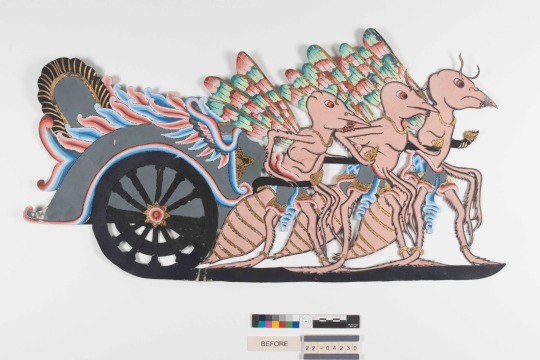
Figure 12. Before treatment photo of the “chariot” shadow puppet against white.
Though I started on the project in 2022, I did not treat the rawhide puppets until 2023. Jessica and I did research into the puppets because the finding aid provided inadequate information, missing the artist and date, and whether the paper and rawhide puppets were made for the same performance. So in 2022, I treated and rehoused the paper puppets while learning about Balinese shadow puppets. Jessica and I did archival research in the Mabou Mines archives, and we found that the puppets were all made for the same performance. Two names came up as the designers of the puppets, Larry Reed and I Wayan Wija. We contact Larry Reed who told us that I Wayan Wija made all the puppets. Pak Wija lives in Bali. Our first few emails ended with no responses. When we were thinking that we would never find him, I found, on the website of the Smithsonian National Museum of Asian Art, an article on Balinese shadow puppet theater by Professor Lisa Gold. She met with Pak Wija and featured him in her article. I emailed her and she provided me with Pak Wija’s contact information. In February, Jessica and I interviewed Pak Wija on Whatsapp.
While the research slowed down the progress, we were grateful that we did not skip it. We learned that the Balinese puppets have sacred entities beyond their physical materials. Balinese puppets were alive in performances, needed to be fed and paid respect, and have the healing power to help people in return.
As conservators, we had limited power beyond taking care of the physical materials; Not a Balinese shadow master, or dalang, I could not take care of the spiritual parts of these puppets that I could not see or touch. According to Balinese traditions, untrained hands were not even allowed to handle sacred puppets. But Jessica and I were proud of our work. I think what we tried to do was to restore the connection between objects and people, giving back the puppets their identities and meanings. I think getting to know them is a starting point for paying the puppets the respect that is overdue so that others can do better in the future. The bond between the puppets and the people would have been lost in time and the dark storage rooms if we did not bring the puppets to Conservation.
The greatest challenge was the consolidation. To stabilize the paints, I fed an isinglass solution into detached paints to stick them back down and to hold tiny flaked paint pieces together. I chose to treat the “chariot” puppet as a trial. It took me a month to finish it. At that time, I had less than 5 months left and 29 puppets to treat and rehouse. Plus, the old stock of isinglass was running out, and I had to extract a new batch to carry on.
So finally I told Jessica, “I don’t think I can treat all the puppets.”
But the puppets might not have the chance to be treated again with enough space, time, and budget. Jessica and my colleagues said I should give it a try. The whole book and paper lab helped in making the new batch of isinglass. Jessica and I agreed that I would treat the most unstable ones as our priority. So that even if I could not treat every single puppet, the ones left would be relatively stable.
I used a Leica microscope to guide the consolidation. Examining the parts that need treatment under powerful magnification allows me to grasp the microstructures of unstable paints and find out a strategy for approaching each situation. Some look like colorful tents, volcanoes, cliffs, and archipelagoes. I found myself diminishing in size, taking a walk in these landscapes. Strangely, with the pressing deadlines, I did not feel like a desperate traveler in a hurry to get to a destination, but more like an explorer on a joyful journey.
When the final month approached, Jessica and I decided to rehouse all puppets and finish their reports before I carry out more treatment. I cut archival blue boards and cut them into the sizes of the boxes. And I attached soft Volara foam blocks as bumpers to hold the puppets in place. And Ethafoam blocks were added to the board so trays could be stacked in a box without pressing on the puppets.
Before we wrap up, Jessica and I met with Weatherly Stephan (Head of Archival Collections management) and Nicholas Martin (Curator for the Arts and Humanities) to share my research findings so that information regarding the maker, date, and correct names of the puppets can be incorporated into the finding aid. For the housing information to be updated and to facilitate clarifying “what went where”, I created a Google document with an illustrated rehousing scheme for reference. Jessica will also keep the research information, including the artists’ contacts, for future reference.
I ended with all the puppets rehoused with their own reports. Of the 37 treated puppets, 30 were consolidated. There are 3 puppets left to treat, but the amount of work required should be minimum.
Ending
I am grateful for working with so many kind and professional people during the past months. I want to give my special thanks to my supervisor Jessica Pace. Jessica helped me better understand the priorities of different tasks. This project is in debt to her patient guidance, communication, and foresight. You can also find out more about the people at NYU Libraries through the staff directory.
I want to thank any patient Tumblr reader who read thus far. If you are eager for getting into Conservation, please find out more at the Emerging Conservation Professionals Network. You are also welcome to contact me via email [email protected]. I am happy to talk about my experience and projects, or just discuss random nerdy things in Conservation.
14 notes
·
View notes
Text
The Amnesiac : ep21
Drawing From Serotonergic Hyperactivity
We’re all gathered around the coffee table, Henrik, Emma, River, Me and Doctor David Hoover, Department Chair, UC Berkeley College of Psychology and resident expert in the illicit distribution of psilocybin mushrooms.
“There’s some debate amongst the academic community about acquired savant syndrome and the use of psilocybin mushrooms” says Dr. Hoover. “I’d point to Serotonergic Hyperactivity as a potential factor in acquired drug-induced synesthesia.”
“What does that mean doc?”
“It means the synesthesia you experienced was chemically identical to a traumatic brain injury. Following a brain injury the dead brain cells are flooded with serotonin, which can cause the acquired savant syndrome you experienced.”
“So it’s true about drugs killing brain cells?”
“No. You see, that’s the beauty of this whole experiment. Psilocybin induces the synesthesia without the cell death by dumping serotonin into your healthy brain. It was - relatively speaking - harmless.”
“I don’t think harmless is exactly the right term” River chimes in. Dr. Hoover doesn’t know about the purple butt plug incident, therefore isn’t able to contextualize the comment so he just responds to her in a scholarly way. “You’re exactly right River, any treatment modality runs the risk of side effects or comorbidity, but these risks are statistically insignificant.”
Clearly, he nor anyone else in the group has any idea what happened physically between us last night, so River smartly just lets his comment pass and moves onto the more pressing question. What do the pictures mean?
The Drawings
#1
The front side of the first drawing features River sitting nude with legs crossed in the lotus position. Hair covers her breasts, and Dave Jr., my dead potted fern is between her legs obstructing the view of her private parts. The back side shows River, head to toe, walking toward me with a creek underfoot through a narrow, vertical-walled canyon, heavily vegetated with ferns. She’s dressed in jeans, big waffle stomper hiking boots with red laces and a cozy looking off-white sweater.
#2
The front side of the second drawing features River standing in my living room wearing one of my old red flannel shirts and no pants. The back side is, oddly, a bearded man, possibly Henrik, wearing the same old red flannel shirt and standing next to a big blue dog.
#3
The front side of the third drawing is a close up portrait of River’s face, hair parted slightly to the side. It is very flattering, in bright pastel colors and highlighting her bright blue eyes. The back side is the same portrait, but dark brown as if River was a statue carved out of wood. Her eyes are cold and lifeless. It is haunting, bordering on disturbing.
#4
The front side of the fourth drawing leaves nothing to the imagination anatomically. It is a graphic close-up sketch of River’s private parts. The back side looks like an ocean of water pouring into a hole. Like someone pouring the entire ocean into someone’s anus.
#5
The front side of the fifth drawing features River laying nude on my wood floor, surrounded by a rainbow of cartoonishly drawn flowers. Those same cartoonishly drawn flowers are still decorating my floor, there is a blank space the shape of a chalk body outline where River’s body once laid. On the back side, River is laying, once again in her big off-white sweater, in a field of perfectly drawn tulips in a rainbow of vivid colors.
#6
The final image features another close-up of River’s face, but this time hidden behind a silver camera. Henrik immediately recognizes it as a Leica M camera, but is unable to distinguish the exact model or vintage. Unlike the other images, the back side is seemingly independent from the front side, this time showing the main street of a fairytale Bavarian village.
—
“Clearly River is an allegory, emblematic of something or somewhere, I’m just not sure what that something or somewhere is. Does anyone recognize these locations?” says Henrik. The only person who recognizes a location is Dr. Hoover. “The back side of print #4, that looks like Thor’s Well. I’m certain of it. But I don’t recognize anything else, and they don’t seem to have any commonality beyond River’s presence.”
I drew the images, and even after extensive review, I can’t make sense of where, why or how these images are related to each other, nor can I discern any meaning. The drugs were supposed to eliminate my amnesia not exacerbate it. But I find myself staring at a bunch of images that aren’t bringing me any closer to solving the mystery of my disappearance. Worse is that Dr. Hoover is a annoyed that we burned through about a month’s worth of his stash in a single evening, and have really nothing to show for it.
“Guys, I hate to be the bearer of bad news, but I don’t think I’ve been to any of these places. Thor’s Well is the screensaver on every Amazon Fire Stick and it’s the background image of 90% of those shitty Chromebooks. That Bavarian village proves it. I didn’t magically disappear for a month to Europe. These are just places I’ve seen on the internet. I doubt they’re real memories.”
I can see that Henrik is really trying to solve the puzzle. His head is tilted to the side slightly and he’s chewing on his bottom lip. Then I see his eyes light up. “Floody, where did you say your phone was?” he queries.
“It’s gone missing.”
“Is it an iPhone? Do you use iCloud?” Henrik asks.
“Yes.”
“Floody, use the Find My Phone locator from your iCloud account!”
“You can do that?”
“Yes, of course. Fetch your laptop!”
I put my laptop on the kitchen bar near the espresso machine and let Henrik drive. He opens the web browser, then navigates to iCloud, and clicks to find my devices.
“Floody, your phone is in Yachats Oregon. You were in Yachats Oregon! Do you know what else is in Yachats Oregon?”
“Why do I feel like you’re about to say Thor’s Well?”
1 note
·
View note
Photo

Explore the enchanting city of Modena, Italy and discover its rich history, stunning architecture, and mouth-watering cuisine. Immerse yourself in Italian culture as you stroll through charming cobblestone streets and sample some of the world's best balsamic vinegar. Don't forget to visit the iconic Modena Cathedral which boasts a unique blend of Romanesque art and Gothic architecture. Whether it’s your first time visiting or you're returning for another adventure, there's always something new to discover in this beautiful Italian paradise. From browsing local markets filled with fresh produce to sipping espresso while people-watching in bustling piazzas - every moment spent here is a dream come true. So pack your bags and prepare for an unforgettable journey filled with laughter, love, and plenty of amazing sights that will take your breath away! • Modena, Italy (2017) Leica M10 Summicron-M 35mm f/2.0 ASPH • #ModenaItaly #ItalianCulture #CobblestoneStreets #WorldFamousBalsamicVinegar #RomanesqueArt #GothicArchitecture #LocalMarkets #EspressoLover #UnforgettableJourney #DreamDestination #italia #adventure #travel #heritage #wanderlust #italy #italianfood #travelgram #nature #outdoors #instatravel #hiking #italian #vacation #travelphotography #exploremore #pasta #culture #explorepage #landscape — view on Instagram https://ift.tt/7MYinJb
0 notes
Text
Leica Hektor 135mm f/4.5 M39 - Adapted To M-Mount Lens Review
Background
In the world of m mount lenses there are a lot of very good options. Some are blisteringly sharp, while others are a little more tame, but have unique renderings or characteristics that provide unique image quality.
I was in a local camera store and saw the lens that is the subject of this review. It is an older screw mount lens which requires an M39 to M adapter.
Disclosure –…

View On WordPress
0 notes
Text
Xiaomi Launches Newest Phones at MWC 2023

The Mobile World Congress (MWC) is back in full force, and with it comes a barrage of new tech products, including computers, software, and most of all, smartphones. With that said, Xiaomi has just unveiled its latest batch of phones for markets and buyers the world over.
More specifically, the Xiaomi 13 series makes it debut today, with a trio of phones leading Xiaomi's charge into consumer pockets once more. Will the new phones be enough to convince buyers to go with Xiaomi this year though? Let's take a quick look.
https://www.youtube.com/watch?v=ywkHOsI5qUQ
Xiaomi 13
First up, we have the Xiaomi 13 which is the more "standard" device of the bunch. The phone comes with a 6.36-inch AMOLED display, complete with a FHD+ resolution and a 120Hz AdaptiveSync refresh rate, which should provide vibrant colours and contrast for users. Powering the phone is Qualcomm's Snapdragon 8 Gen 2 chipset, paired up with LPDDR5X RAM with UFS 4.0 storage. The phone will be available in 8GB+256GB and 12GB+256GB storage options.
in terms of imaging hardware, the Xiaomi 13 will come equipped with a triple camera setup on the back with a 50MP main sensor, that the company says comes with professional optical lenses from camera brand Leica. Additionally, the phone features a telephoto lens based on Leica’s 75mm Noctilux-M lens, as well as an ultra-wide lens to round things out. Xiaomi is going all-in on its partnership with Leica, incorporating several Leica-branded software features into the camera.
in terms of battery, the phone packs a 4,500mAh battery with support for 67W fast charging, 50W wireless charging, and 10W reverse wireless charging. One thing to take note of is that the phone starts at €1,000, a big jump in cost from the company's older pricing strategy of launching flagship-level handsets with considerably lower prices versus the competition.
Xiaomi 13 Lite
Up next is the more affordable variant in the line-up, aptly called the Xiaomi 13 Lite. Designed to compete with handsets such as the Google Pixel A-series and Samsung Galaxy A-series, the phone tones down the specs sheet for a more wallet-friendly experience overall, although this doesn't necessarily mean a complete compromise with hardware.
The 13 Lite features a 6.55-inch display with an FHD+ resolution, which thankfully still comes with a 120Hz refresh rate with support for Dolby Vision and HDR10+. Beating inside the phone is the Qualcomm Snapdragon 7 Gen 1 chipset, and comes in 8GB+128GB and 8GB+ 256GB RAM versions. The device also features a triple camera setup on the back which includes a 50MP wide angle Sony IMX766 sensor, an 8MP Sony IMX355 ultrawide angle camera, and a 2MP macro lens. Other specs include a 4,500 mAh battery with support for 67W wired charging.
As for pricing, the Xiaomi 13 Lite takes a more budget-conscious approach, and will come with a starting price of around €500.
Xiaomi 13 Pro
The granddaddy of the bunch, the Xiaomi 13 Pro comes with some similar specs to the standard 13 model, although it amps up some of its hardware. There's a larger 6.73-inch display with a WQHD+ resolution, and likewise comes with a 120Hz variable refresh rate. It's also powered by the Qualcomm Snapdragon 8 Gen 2 chipset, although it comes with 12GB RAM for the base model plus 256GB of internal storage, which can be bumped up to 512GB.
In terms of optics, the Xiaomi 13 Pro features a 50MP main sensor with a 23mm f/1.9 main camera with a 50MP Sony IMX989 1-inch sensor, a commendable move on Xiaomi's part given that 1-inch sensors aren't commonplace on a lot of smartphones (at least at the moment). The phone will support 8K video recording, Dolby Vision up to 4K at 60 fps, and Xiaomi's ProFocus mode. Other camera specs include a 75mm f/2.0 Leica floating telephoto camera with OIS, and a 14mm f/2.2 Leica ultrawide camera.
As for battery, the Xiaomi 13 Pro packs a 4,820 mAh battery, complete with support for 120W fast-charging, 50W wireless charging, and 10W reverse wireless charging. All of this hardware is wrapped up in a design which comes with an IP68 rating for dust and water resistance.
Should you wish to purchase the 13 Pro, the phone will be available in Ceramic Black and White, with a starting price of €1,300. This puts its cost way above other phones like the Pixel 7 Pro and OnePlus 11, and more in line with phones from Apple and Samsung - a bold move we should say. With that in mind, it should be interesting to see how the phone performs over time, both in user experience and sales.
Read the full article
0 notes
Text
Vintage Digital - Leica M Type 240 Part 3: May finally understand my M obsession.
In the past, I had never fully understood my obsession with Leica M mount digital cameras. It just did not make sense to me. Could not attribute it to the typical reasons.
Leica lenses
Many swear by Leica glass which is understandable. Have heard nothing but good things about them. Newer, higher spec, and legendary Leica glass is simply too rich for my blood. I owned an older Leica lens…

View On WordPress
0 notes
Text
Xiaomi reveals concept phone with a mount for Leica M lenses based on the 12S Ultra
Xiaomi reveals concept phone with a mount for Leica M lenses based on the 12S Ultra
Xiaomi narrowed the gap between smartphones and premium digital cameras with the release of the Xiaomi 12S Ultra and its 1” sensor. But even that has lenses with fixed focal lengths like a typical smartphone. Now the company offers a rare glimpse behind the scenes – there were actually two projects being developed concurrently, one of which became the 12S Ultra. The other is a hybrid between a…
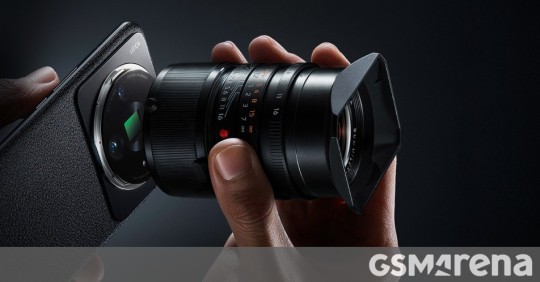
View On WordPress
0 notes
Text
Mini Research Paper
Dejanay Rattray
Professor Nichole Frocheur
Introduction To Photography
11 November 2022
Brooklyn Gang (1959

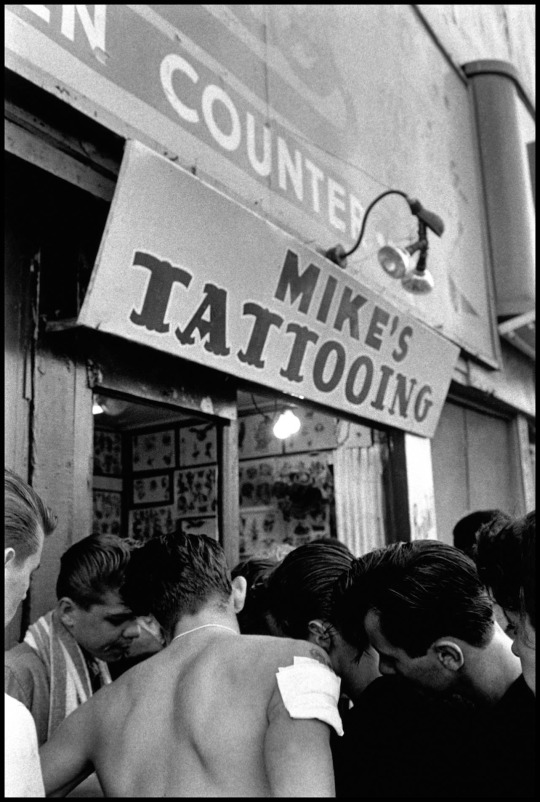
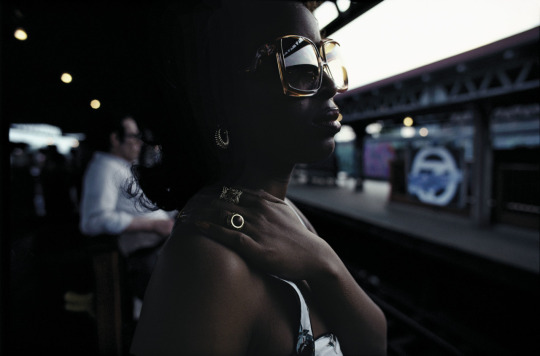
Bruce Davidson: Subway and Brooklyn Gang
"If I am looking for a story at all, it is in my relationship to the subject - the story that tells me, rather than that I tell"( Davidson, 1958). Bruce Davidson began taking photos at the age of ten. Throughout life, he aimed to better his passion and knowledge of photography. Bruce would be deployed to Paris after being drafted into the army. This is where he would meet Henri Cartier-Bresson, one of the six Magnum Photos founders, which would come to the main stage for many of his photos. After leaving the army in 1957, many would think that Bruce would have lost his love for photography, but it instead grew. In fact, a few of his “seminal bodies of work such as The Dwarf, Brooklyn Gang, and Freedom Rides”(Davidson, 1958) were created soon after he left. He does documentary photography from a humanist perspective. This is a discussion of two distinct bodies of his work that I find profound: Subway and Brooklyn Gang.
Brooklyn Gang was a photograph series used to talk about the social issue of teenage gangs. After reading about the many teenage gangs in New York City; Bruce got into contact with a social worker who would help initiate the contact between Bruce and The Jokers. He would begin this project in 1957 at the age of twenty-five. It was his first major project. He felt very connected to this project because he was photographing many teenagers that werent too far from his age. Davidson took most of his photos with a Leica M Rangefinder with a twenty-eight milimeter lens. Most of the photos in the series were taken all over Brooklyn but mostly by 17th street where many of the gang members hung out and resided. The photos show how many of the members spent their days. We can see them going to prospect park on Friday nights to drink beer and talk to girls; we can see them playing stickball on Seventeenth Street and Eighth Avenue; and getting tattoos at Mike’s Tattoo shop. Through these photos, we can see the closeness of the gang members and the sense of family even though they were looked down upon by the community. Shown through the similarity of hairstyle between the gang members, is shown through an aerial photograph of them playing baseball. And even though many looked down on them we can still feel the sense of community, “Nobody's car would get dented or banged up. We watched over the block, It was a great time. I always felt safe on the block (Davidson, 1958). All photos in this series are taken in black and white which is because and I only assume is because of the time period. But this use of Black and white also gives us a connection and feeling towards the Brooklyn Gang and help us to understand the spirit and culture of the gang.
Unlike Brooklyn Gang in the Subway Series, we see an entrance of color. It is through the subways series that Davidson begins to shift from the use of Black and white to the use of color. Unlike the sharp photos of the Brooklyn Gang series, we are seeing more of a dark ominous feel through the subway photos. We see David get closer and more personal to the subjects that he is photographing. Subway, was “a voyage of discovery” (Davidson, 1980). Davidson spent roughly five tears exploring the many reaches of the subway station. Where he took photos exploring different lights and colors; while exploring the faces of the city.
Subway was a project that brought the photographer back to himself after he had gone on to become a movie producer. Through Subway the author found himself back to his roots. He would begin the exploration of New York City. He took pictures of the traffic islands that line Broadway, trees, and traffic have always interested me. He found myself photographing the lonely widows and solemn old men who line the benches of Manhattan’s Upper West Side. Through his many explorations of New Yor City, he found the thing that all parts of the city had in common, The Subway Station. The subway interior was defaced with secret handwriting that covered the walls, windows, and maps. He felt like there was a secret message that had to be decoded, and that message would tell the story of the person who left it. Davidson wanted to use his photos to “transform the subway from its dark, degrading, and impersonal reality into images that open up our experience again to the color, sensuality, and vitality of the individual souls that ride it each day”(Davidson, 1980). In many of the subway photos, we see a more wide aperture. Which we can see in the photograph of the lady. He focuses more on the beauty of the lady than what is going on in the background. He shows the exquisiteness of the people who use the torn and dark subway rather than focusing on the spray painting on the walls even though they do play a major part in this series. Davidson believes that the train is a great social equalizer. When the train is above ground we see the city and the lights, but when the train is underground and in the tunnels we see the sterile fluorescent light and they all become trapped in the gloom together trying to hang on.
It's beautiful, the difference in these series. The transition from color to light is one of the great and most impactful contrasts between these photos. Black and White is the perfect film choice for the Brooklyn Gang demonstration of the sharp spirit, and community between the teenagers. While color, shades, and light play a big part in showing the beauty and life in the darkness of the subway.
Work Cited
“Brooklyn Gang • Bruce Davidson • Magnum Photos Magnum Photos.” Magnum Photos,https://www.magnumphotos.com/newsroom/society/bruce-davidson-brooklyn-gang/#:~:text=In%201959%2C%20Bruce%20Davidson%20read,of%20this%20alienated%20youth%20culture.
“Bruce Davidson • Photographer Profile • Magnum Photos Magnum Photos.” Magnum Photos, https://www.magnumphotos.com/photographer/bruce-davidson/.
“Bruce Davidson.” The Art Institute of Chicago, https://www.artic.edu/artists/6029/bruce-davidson.
0 notes
Text
Xiaomi's new concept smartphone is a 12S Ultra that can be attached to Leica's M lenses
Xiaomi’s new concept smartphone is a 12S Ultra that can be attached to Leica’s M lenses
Xiaomi Conceptual ‘Smartphone’ That Allows Attaching Leica M Lenses – XIAOMI
Xiaomi has developed a concept smartphonebased on it along with the 12S Ultra, which allows you to attach Leica lenses to improve the photographic quality of this device.
Xiaomi presented in July the members of the 12S Series family, in which the 12S Ultra model stands out, which integrates a camera optimized by Leica…
View On WordPress
0 notes
Text
Xiaomi concept clips a full-size Leica lens onto a smartphone
Xiaomi concept clips a full-size Leica lens onto a smartphone
The mounting system attaches a Leica M-series lens to Xiaomi’s phone. | Image: Agatha Tang
Xiaomi’s new concept phone allows a full size Leica camera lens to be attached to the back of a prototype version of its 12S Ultra. The version of the smartphone released earlier this year is already notable for having a 1-inch-type camera sensor on its rear, which is far larger than those typically used in…
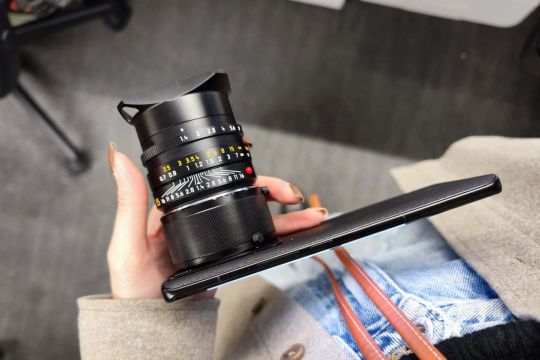
View On WordPress
0 notes
Text
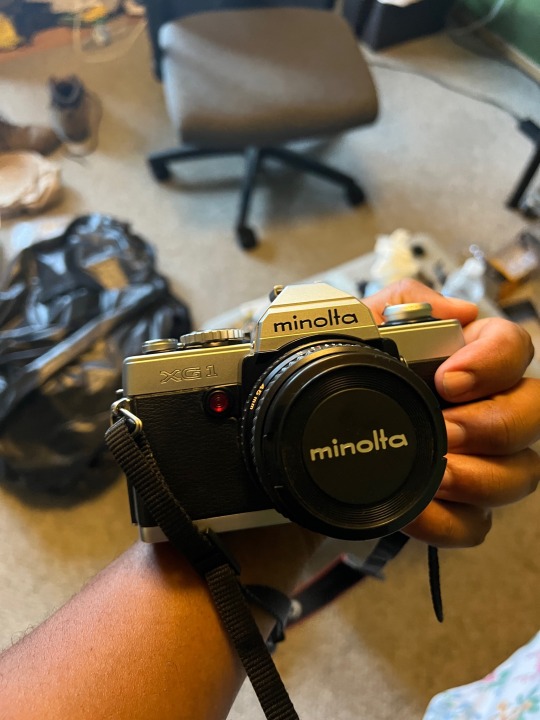
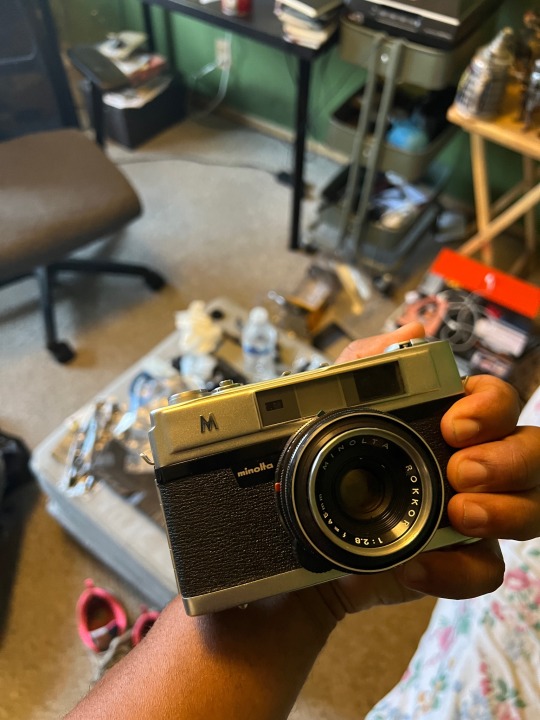
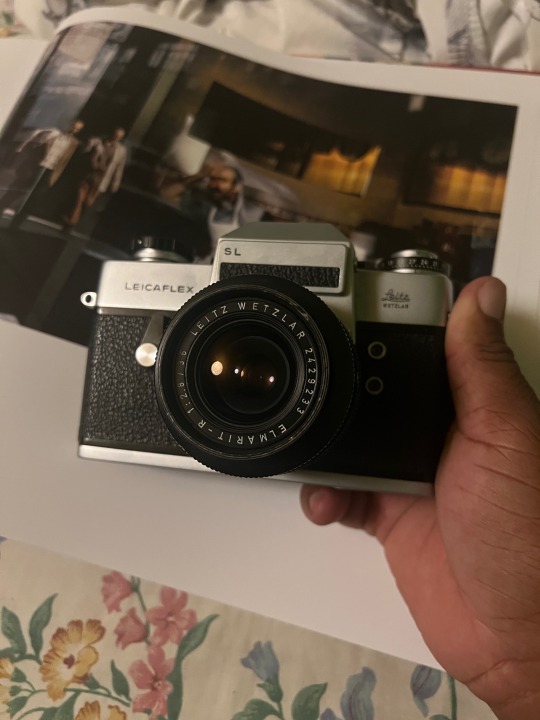
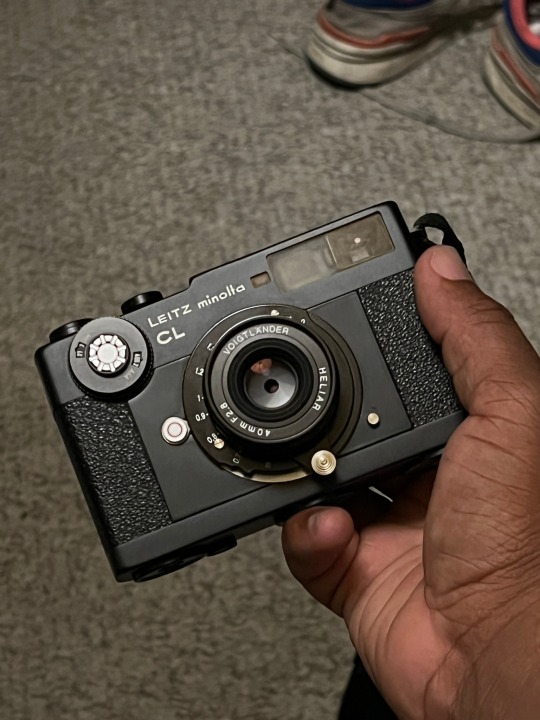
I got into film photography a few months before the pandemic. I’ve been into photography and video for a while, and my goal was to be a cinematographer (not so much now, a story for another post). My friend kept telling me that I had to get into film. All the hipsters told me that. I mean, you’re not a “real” photographer unless you shoot film, right?
So I bought a used Leicaflex off eBay. That was because I already had two R mount lenses that I used for video, and I liked the image they produce.
The camera is beat up but fully mechanical, no batteries needed. But the light meter is broken, so I had to learn how to expose using the sunny 16 rule and zone system. I also use a phone light meter app, which does the job in tricky situations. The camera is heavy and bulky, but it was all I had. I grew to love the loud thunk of its mechanical shutter.
One of the things that kept me away from shooting film was developing it, but since I had started down the film rabbit hole, I went ahead and learned how to develop at home. I bought a Paterson tank, a dark bag and a Epson v600 scanner. I’ve only used a lab once, and I wasn’t happy with the results, but that was only after I had been home developing for a few months.
Then the Leicaflex broke. I was heartbroken. That camera had become part of my identity. I took it everywhere I went and took photos of the basic hipster stuff: gas stations, car washes, parked cars, etc. I took it to a trendy film camera store to get it fixed, but I needed a camera for the meantime. I bought a Minolta XG-1 to hold me over while I waited for the repair quote for the Leicaflex.
It would cost $385. I paid less than $200 for it. I like the Minolta XG-1, except for the fact I need a battery to operate it. Then I got into rangefinders, because I always wanted a Leica — well I had a Leica, but I wanted a rangefinder, a “real” Leica. I read up on the Leica M cameras, but I’m poor. I found a Minolta A5 instead, a solid fixed lens rangefinder. I shot with that for a few months, then I dropped it and broke the rangefinder mechanism. It still focuses, but I can’t see the focus. I had to learn how to zone focus and judge distance. I’ve gotten pretty good at it.
Then I bought a Leica CL, mainly because of its small size and because I wanted to get into street photography; I had grown tired of what I call my “dystopian bullshit” — factories, dumpsters, empty streets, industrial settings, freeways, and so on. I wanted to challenge myself to do something else. Of course, a new camera isn’t gonna make me a better photographer. I really just wanted a Leica rangefinder (I mean all the cool photographers shoot with Leicas, right?), and the CL as the cheapest I could afford. I really want an M6.
I also found a Leicaflex SL for a good price and in great condition. The meter even works! So now I have four cameras. I want to get into Medium format. I want to learn how to print in a darkroom. But I’ll wait. Right now I’ll stick with 35mm and scanning. And exploring street photography while expanding upon my dystopian bullshit.
1 note
·
View note
Text
Homeworld 3 railgun frigate

epic, a smaller but less "grandiose" storyline? It works fittingly. It has recognizable problems, from the weirdo ship design (that however makes it essentially more interesting compared to HW2 "generic VS Hordes" template) to the soundtrack. Without touching the lore that's essentially a travesty.Ĭata is pulp. I can concede that the ship design is pretty nice and the vistas are impressive, but the system under it is. It's already been argued to the death about the mechanical problems of HW2 (fighters, frigate bugs, subsystems) and I don't want to sperg about it again. I can eviscerate HW2's problems all day, it's a game that made me legit ANGERY. Mission design goes from subpar to HW1 derivative (destroy Hyperspace Inibitors, yawn) to annoying (the Keepers and the Movers, imagine having the Graveyard Dog but essentially worse in every regard) to bothersome (Bentusi Ruins) to frankly infuriating (Thadis Shabbah and the THIRTEEN BATTLECRUISERS meme, the last mission is such a shitshow that I don't even know). Lore alterations should be criminal acts, but what can we do? I prefer to judge every singular piece of entertainment and art first on its own, and only then in comparison what it relates to (prequels, influences etc.). I understand your contempt for it, quite like how I despise Skyrim even in comparison to Oblivion and especially Morrowind, but really - H2 on its own is good. It is unfair to call H2 "essentially crap", it really is a good game and a generally nice experience. And ship design is beautiful too, quite distinct and much more refined than how it was in H1, although I admit some designs in H1 were very nice (the "needle ship" for instance). The soundtrack is also quite good, personally I find it much better than H1 and have it on my phone to listen to whenever I want, incorporating "desert tribal Middle-Eastern influences" rather well for a "vast, mostly empty and tribal galactic space" theme. That aside, H2 has improved on graphical department immensely compared to H1 (art direction is another matter), and since video games are visual media that does matter. yeah, I didn't feel anything of the Homeworld there. Recently, by which I mean in the last 2 years, I've completed H1 Classic, and enjoyed it quite a bit. Whether you’re working with the Sony E-mount, Leica M, Canon EF, Fujifilm X, Nikon F or another system, Urth has an expansive range of lens adapters to help you connect with legacy lenses.It may have seen like I panned Cataclysm as "essentially crap", but I merely said it was "uglier and less good", not that it was bad in itself. With more consumers and professionals choosing to use mirrorless systems, keeping your legacy glass on-hand is a great way to keep some flexibility in your practice without spending thousands on new lenses. While it is possible to purchase another type of adapter to fix this issue, they’re expensive and often limited in their function. Perhaps the most important of these is the loss of autofocus. However, there are some noteworthy drawbacks to legacy lenses. The sustainability factor is also something that should be celebrated, as repurposing products means that you’re not contributing to the endless cycle of technology being manufactured and discarded every year. While modern lenses offer some features that many of the formerly great glass simply can’t, it only takes a quick peek at eBay to realise that they can still offer incredible value for money with their image quality. Even if the resurgence of film photography has contributed to an increase in the price of legacy glass, these old lenses can still be hundreds of dollars cheaper than their modern counterparts. The beauty of buying second-hand lenses is that they tend to be rather light on the wallet.

0 notes